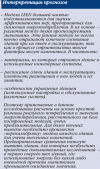The LEED Program: Models and Reality.
LEED Program: Models and Realities Assessing the effectiveness of measures to reduce water and energy consumption in 11 new buildings in the Pacific Northwest region.
Cathy Turner New Buildings Institute Inc., Washington State, USA*
Is it realistic to reduce water and electricity consumption in buildings? meeting modern environmental standards?
A recent study provides a preliminary estimate of the actual utility system performance of 11 U.S. Green Building Council Leadership in Energy and Environmental Design (LEED)-certified buildings in the Pacific Northwest region.
The study summarizes utility system performance data (basic information about overall system performance) as well as data from the initial modeling conducted to consider these buildings for LEED eligibility (see Definitions, used in the LEED program»)
The difference between the two levels of water and energy consumption corresponds to the savings initially expected from the implementation of planned energy and water efficiency measures.

Although much more detailed analysis may be required to fully understand the performance of utility systems after commissioning, preliminary comparisons of results such as those carried out in this article provide a number of useful estimates and highlight the need for further analysis for the buildings in question.
BUILDINGS PARTICIPATED IN THE STUDY
31 buildings were considered suitable for participation in the study. The final stage of the study involved 11 buildings whose owners were willing and able to promptly provide the necessary information.
The 11 buildings included in the final study are located in a variety of locations (from Portland, Oregon, to Seattle, Washington) and are grouped by type (from office and library buildings to apartment complexes) and range in size from 12,300 to 363 000 square feet (see table) At the beginning of the study, all buildings had been in operation for at least 1 year.
Buildings participating in the study

ENERGY CONSUMPTION RESULTS
Energy savings were assessed in two ways:
— Actual energy consumption figures were compared to a model baseline that was calculated when buildings applied for the LEED program. This made it possible to evaluate the effectiveness of measures to reduce energy consumption in relation to relatively new buildings where no measures were taken to increase energy efficiency. This method can reflect the climate, structure and general characteristics of the systems in the buildings involved, but as explained in the footnote “Interpreting Forecasts”, when using models that predate the construction of the buildings in question, the accuracy of the comparison is relatively poor.
— Actual specific energy consumption per square foot was compared with the same average for commercial buildings in the region. This was used to estimate energy savings compared to buildings of different ages and types.
ENERGY SAVINGS IN MODEL FORECASTING
In all buildings, the specific energy consumption per square foot was less than predicted by the baseline models. The average savings was about 50%. The table (Fig. 1) compares the actual specific energy consumption of the studied buildings with the forecasts obtained based on the base models (for the King Street Center [KSC] building and the O-7 building, data from the base models was not available). Eight of the 11 buildings had actual specific energy consumption (SER) values ranging from 45 to 55 kBtu per square foot per year. For the other two buildings, the RUE values were significantly higher. These were:
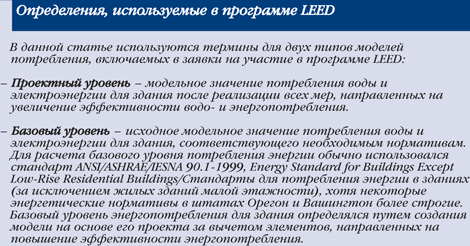
— building O-7, which is in the process of many years of reconstruction and replacement of heating, ventilation, air conditioning and lighting control systems. It is not surprising that the energy expenditure here to maintain comfortable conditions was so great. Further research may reveal how effective the latest changes have been;
— The Hillsdale Branch of the Multomah County Library (HL), which was modeled with the highest energy density (172 kBTU per square foot per year). However, the RUE turned out to be noticeably lower than the model. The library turned out to be the only one-story and the smallest building among those studied. And underneath there was an unheated garage. The library was open to the public seven days a week and there were quite a few personal computers in the building. Continuing research here is not part of the current research plan.
The RUE of each facility was also compared with its design value. For all of them this difference exceeds 20%. As can be seen from the table (Fig. 2), in six buildings the RUE was lower than the design one, and in four others it was higher than the design one. This discrepancy is explained by a number of differences between expected and actual conditions. If a building uses significantly more energy than the original design model predicted, further calibration can help pinpoint the exact nature and location of the problem. If a building uses less energy than predicted by the model, this will lead to an overestimation of the energy savings achieved. This is precisely the picture (see Fig. 2) that was typical for buildings HL and SL., the models of which included the highest energy savings.
SAVINGS COMPARISON
Energy Star’s Target Finder was used to find the 50th and 90th percentile lines (Figure 3) in energy consumption. The RUE value was subtracted from the 50th percentage line value. In 9 out of 11 buildings, the RUE value was below this threshold. The average savings were about 25% of the average energy consumption for commercial buildings.
Each savings calculation method provides a different way to look at energy consumption. For example, comparison with data from the original models (see Figure 1) suggests that HL was likely to achieve at least the estimated level of savings, while comparison with average data for commercial buildings (see Figure 3) suggests that the design of a building may result in a greater increase in energy consumption than would otherwise be expected.
Other comparisons may be more relevant to specific building owners. For example, if a newer building replaces an older one owned by the same owner, then a better comparison of energy consumption between the two buildings may be best. For owners of industrial complexes with a large number of buildings, comparison of the percentile distribution between these buildings will be most useful.
WATER CONSUMPTION RESULTS
This study also compared actual, baseline and design values for domestic water consumption. However, such modeling was carried out only for 7 of the 11 buildings studied, since the owners of four buildings did not apply for LEED certification for water efficiency.
Due to the lack of necessary reference values in public databases for water consumption parameters in commercial buildings, it was not possible to make an alternative assessment of the savings achieved.
In four of the seven buildings (Figure 4), actual water consumption was below its original baseline model value.

Variations in terms of the basic water consumption reading were due primarily to differences in assumptions about the frequency and duration of tap use and bathrooms. The industry could benefit from additional research focusing on water consumption to help determine more accurate values and develop benchmarks.
The Jean Vollum Natural Capital Center (NCC) building illustrates a common problem associated with efforts to improve water efficiency.
The upper boundary of the rectangle in the diagram (see Fig. 4) corresponds to the total measured volume of water consumed in this building. However, the water was also used for the needs of the restaurant and conference rooms, and for irrigation of the surrounding area. Water consumption for these needs was not measured separately.
The top two segments of the rectangle are estimates of water consumption for irrigation (based on the difference between summer and winter water consumption values) and for restaurant needs (based on published average values for restaurants).
The remaining lower segment of the rectangle corresponds to the water consumption of the Center itself, and it is much closer to the water consumption values in other office buildings.
CONSUMER SURVEY RESULTS
Building users were also surveyed about the comfort and functionality of temperature, air quality, lighting, noise and plumbing system performance. Overall, positive assessments were received.
In all buildings, light levels and indoor air quality were found to be conducive to work. Complaints about noise and insufficient sound insulation noted in some buildings were the result of the use of common office areas with low partitions between workstations or desks without partitions between them. It is also interesting that the survey conducted as part of this small study did not find a clear correlation, positive or negative, between the level of satisfaction with the temperature of buildings and the specific energy consumption of buildings or the level of energy savings.
LESSONS AND CONCLUSIONS
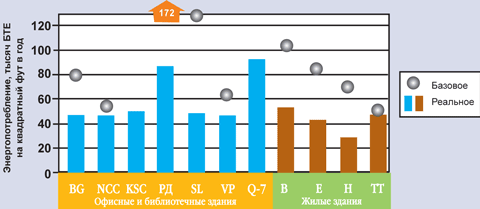
Fig. 1. Real specific energy consumption and its comparison with the basic values obtained by modeling
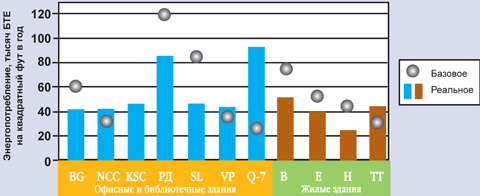
Fig. 2. Comparison of real and designed specific energy consumption
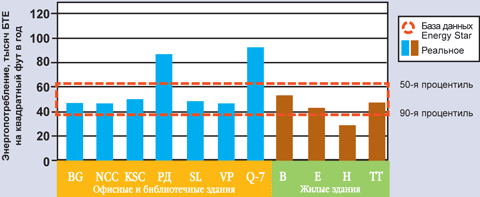
Fig. 3. Comparison of Real specific energy consumption with its average values
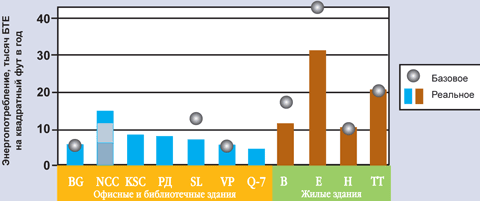
Rice. 4. Comparison of actual and baseline water consumption
Simple steps taken during the design and construction of buildings can make it easier to later measure actual energy savings and possibly help increase them. Building designs need to be designed from the outset to make it easier to monitor energy consumption. But it is advisable to take into account the following factors:
— An obstacle to even the simplest research can be the lack of basic information about the use of utility systems. For example, the lack of individual measuring devices for various buildings on the same territory does not allow further summing up of the operation of utility systems in these buildings.
— Based on the initial models, it is necessary to obtain key parameters for assessing the operation of utility systems. For example, the reasons for the expected level of utilization of utility systems and the reasons for particularly high or low values of the design specific energy consumption. In the future, this information should be provided to building owners and their managers so that it can be used from the beginning of the operation of buildings and monitoring the operation of utility systems in them in real conditions.
— To determine the return on costs aimed at reducing energy consumption. The full value of these savings and costs must be taken into account when designing and implementing a cost reduction program.
Simple calculations have generally shown that most buildings have indeed achieved reductions in energy consumption. Approximately half of the buildings also experienced some reduction in water use compared to the original indoor water use models. But a more detailed development of reference water consumption values will help make more accurate calculations for reducing domestic water consumption in the future.
The results of the study allow us to create a solid basis for continuous monitoring of the performance of utility systems in buildings and determine its baseline level, which can then be used by building owners to evaluate future optimizations of these systems or equipment upgrades.
The survey conducted as part of this small study did not reveal a clear correlation, positive or negative, between the level of satisfaction with the temperature of buildings and the specific energy consumption of buildings or the level of energy savings.
НРАСEngineering (October 2006).
